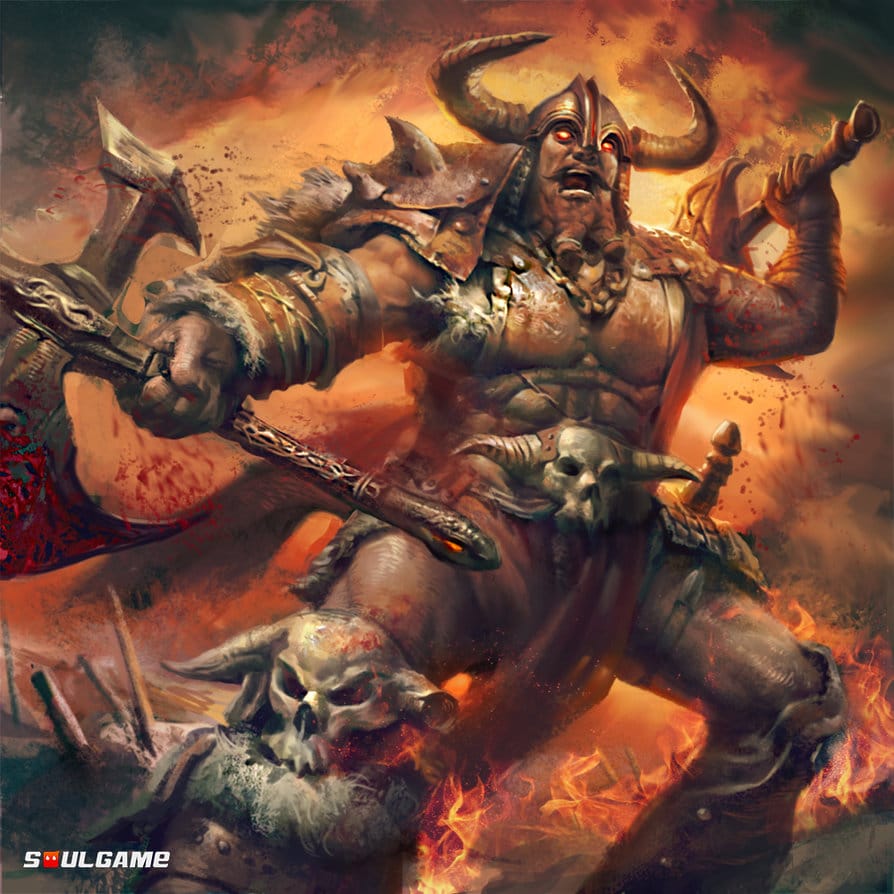Action Economy, the most cherished resource in the game. More valuable than your ability modifier, your challenges, or even your spells. This one mechanic defines what you are limited to more than anything else. Now you might be thinking at this point, “You have been praising it so much, what is Action Economy?”
Well, Action Economy is the inherent limits to a character, defining what they can and cannot due in a turn. It is comprised of your movement, an action, bonus action, and reaction. Doing more than this is near impossible and is so strong, is immediately considered a game-breaking ability.
Why Is it Important
There are two things to make any combat encounter memorable. The buildup of the event and the actual event itself. Now The buildup is worthy of a whole other post that I will probably get to work on sometime soon. That said, the actual event, ensures that it was a satisfying experience filled with memories. And the best way to make sure it is done right is to make sure the action economy is balanced.
Allow me to explain. To keep a game balanced, you need to make sure everything is controlled by a limiting factor. This is often done with things like hit points, rules, challenge rating, and most importantly actions. Which, among all the limiting factors, action economy does the best to protect the game from being unbalanced.
Why Is It Important: Combat Encounter
The clearest example of this is in a deadly boss fight that lacks the action resource to balance it. Let’s say you are level 5 in a 5-man party fighting a fire giant. When looking at challenge rating you are actually fighting something considered deadly for a fight.
However, once you take a look at the combat resources you will notice there is a serious issue in this combat scenario. You guessed it, the action economy. In this fight, a fire giant will have a great pool of hit points, serious damage to deal, but only two attacks per turn.
Meanwhile, your adventuring group of 5 will each have their main attack, and potential bonus action to use in fighting the fire giant. This changes it to where the fire giant can, at most, affect two people in a party of five. Meanwhile, all five adventures can cast spells, deal damage, or interact with the fire giant by his turn comes around. Doing, at most, ten different actions to hurt or control the giant. Changing this to roughly a 2-round lackluster combat.
In fact, I tested this with some friends for a quick combat encounter where we repeated the fight three times. Only one of these went past 4 rounds and that was primarily due to the party rolling 4 natural 1’s in the first two rounds and the fire giant rolling a natural 20 on the first attack. The other two were over by round 2 thanks to spells and effective use of their action resources.

Why Is It Important For Abilities & Spells
Now you might be thinking, “It’s important for monsters, but why me?” Well, it is important for you as it defines how effective you can be in combat.
There are many spells considered game breaking. But, when looking at them, still heavily limited by action economy to prevent them from being world breaking. After all, say you cast the spell disintegrate which does 10d6 +40 damage. That is a lot of damage in D&D 5e. This is considered to be a game-breaking spell for damage as it does 75 points of damage.
However, what if we compare it to the spell sunbeam that does 6d8 damage. This is roughly 27 points of damage when cast. As you can see nowhere near as competitive in pure damage from one burst as disintegrate, and they are even both level 6 spells.
The real trick though comes when you look at it with the sorcerer meta-magic, “Quickened”. Now if you do not know what this is, “Quickened” allows you to break the game a little bit by casting a spell as a bonus action instead of an action. This frees up your main action to do whatever you need to accomplish.
Well, once you consider that, and the fact that sunbeam allows you to recast the spell as your action on any turn until concentration ends. Now you can “Quicken” it to cast it as your bonus action to deal 27 points of damage, and then again as your main action to deal another 27 points of damage. This transforms the spell into dealing 54 points of damage in one turn. Or, if you do this until the spell ends (10 rounds) 540 points of damage. All because you effectively gained the ability to cast the spell twice using your action economy.
Overcoming Action Economy: Legendary Actions
Now that I have shown you why action economy is important, allow me to show you a few of the best ways to overcome it when you are DM.
The first use in overcoming the action economy is legendary actions. Now for those that are unfamiliar with legendary actions, legendary actions give additional actions to a monster outside of their turn. If you want to know more about this there is a Reddit post that does a decent job at explaining it in more detail.
Now there are a few monsters in the monster manual that have this system already built into them. An example that shows this would be a Unicorn. These are creatures that Wizard of the Coast have deemed a challenging creature fitting for fighting large adventuring parties and attempted to balance out the action economy in them.
That said, legendary actions can be on any creature in D&D. For example, let us go back to the fire giant example mentioned above. Remember how me and a few friends tested out the combat situation. Well, we tested it out again, but this time we gave the fire giant legendary actions. The difficulty increased significantly to the point there was once we had a team party kill and the other times a tpk was a serious outcome.
It should be noted, this is only one way to overcome the action economy when you are the DM. There are quite a few ways to control it, but the second biggest way to control it we will talk about are lair actions.

Overcoming Action Economy: Lair Actions
Lair Actions are an iconic combat mechanic that does a great job at balancing out the action economy in an encounter. These are also great because of how iconic they are. They immediately create a lasting memory because these are often tied with campaign ending bosses. Cause if the boss has spent his life perfecting his home defenses, you better believe there are some things in there to protect him. If you want to see some examples of it, I suggest checking out this post here that gives a quick list on lair actions.
So how does this affect the action economy? Drastically. What you effectively do is create another monster that usually cannot be directly fought but does fight them. Not only this, but it overcomes the limiting action economy one villain has by adding in a new set of actions that you, the DM, controls.
Instead of giving the fire giant layer actions, how about we have a lair action that causes fire to erupt dealing 2d6 damage to one person who fails a DC 15 dexterity save. Or, it can also shake the ground forcing all enemies to make a DC 13 dexterity save or fall prone. And it happens on initiative count 20. Now the fire giant has some more power in his corner. If he wants to try and knock an enemy prone to gain advantage causes the room to shake forcing the dexterity save. If there is someone concentrating on a spell you need to try and disrupt, use the lair action to deal 2d6 damage to them and potentially force them to lose concentration.
As you can see, the lair action adds a whole new dynamic to the encounter and balances out the action economy by creating another round of effects.
Overcoming Action Economy: Players
So, what about for players? What are ways to enhance your gameplay by increasing your action economy? Well, there are actually a ton of ways for players to break action economy. So much so that if I were to write them all here this would be another 3000 words. As such, today we will go over two ways to overcome action economy for players.
Overcoming Action Economy: Action Surge
This is considered the most game-breaking ability in all of 5e Dungeons and Dragons. Action Surge, and I quote, allows you to, “On your turn, you can take one additional action.” That’s it. It is so good that tons of people try to find new and creative ways to use it. As such, I wrote an article that goes over every question on action surge and what you can and can’t do to optimize your action economy.
If you are still confused about it don’t worry and just remember this. Action surge allows you to perform another action in addition to your previous action. So, imagine the sorcerer metamagic combo. What you can effectively do is bonus action “Quickened” the spell sunbeam then do it again with your main action. Afterward, action surge to do it for a third time all in one turn. Transforming your 27 points of damage, to 81 points of damage if all three hits. Increasing your damage to that above disintegrate which is 75 points of damage.
And this is one use of the mechanic. There are countless other ways that make this mechanic a great addition for anyone trying to control their action economy. Such as double your movement speed, get out of danger and still be able to attack, or transform four attacks into eight attacks. These are just to name a few to show you how gaining one more action changes the game.

Overcoming Action Economy: Haste
Since we have gone over a mechanic that overcomes action economy, let’s go over a spell too. And there is no better way to this than by talking about the spell haste. After all, there is a reason Haste is almost always a chosen spell. The reason being it works great at controlling the action economy. So, let’s take a look.
Choose a willing creature that you can see within range.
Until the spell ends, the target’s speed is doubled, it gains a +2 bonus to AC,
it has advantage on Dexterity Saving Throws, and it gains an additional
action on each of its turns. That action can be used only to take the attack
(one weapon attack only), dash, disengage, hide, or use an
object action.
When the spell ends, the target can’t move or take actions until
after its next turn, as a wave of lethargy sweeps over it.
Now if it’s not already obvious, the spell does quite a lot. That said, there are two things we are going to talk about that tie into overcoming action economy limits. Increase in movement and increase in actions.
Movement is vital in D&D and a lot of people underutilize this resource. As such, to many, this seems like a small boost. However, if you read my best cantrips 5e regarding ray of frost, you will know I am a big proponent of this action. With that said, here is why in one sentence.
Movement ensures you can reach your target, get out of danger, or position yourself to be in an enemy’s way; allowing you to control the battlefield.
That is really it, nice and summed up in one sentence. Movement protects you and controls the enemy, so having double of that greatly increases your maneuverability and survivability.
Overcoming Action Economy: Haste’s extra action
The last part we are going to go over in overcoming action economy is gaining an extra action via haste. This is a serious power up considering all the other benefits the spell gives you, and here is why.
By gaining an extra action, this allows for increased effectiveness for anything you are trying to accomplish. For instance, say you are a rogue and get hasted. You normally would have only one chance to get your sneak attack damage, now if you miss you gain another shot to try and get sneak attack. Thus, increasing your damage.
Or if you are a monk and need to get somewhere fast. Be hasted and move 90ft per action resource used. Therefore, by using your movement, bonus action to dash, main action dash, and additional main action dash, you can travel 360ft in 6 seconds. Beat that Usain Bolt.
I know that last one seems useless and pointless, but the truth is it serves to show how far haste breaks the action economy cause before the spell was cast, they could only move 135 feet. Which, to sort of sum up is what an extra action is all about, to achieve the impossible and be twice as effective.
Action Economy Summary
There you have it, what an action economy is, why you need to know it, and how to overcome it. If you liked this post, then I highly encourage you to check out my review on the trap mechanic. As I go over in detail why it is important for a dungeon crawl and how to make it one of your player’s favorite mechanics to run into. I hope the day is splendiferous and you keep on rolling!


